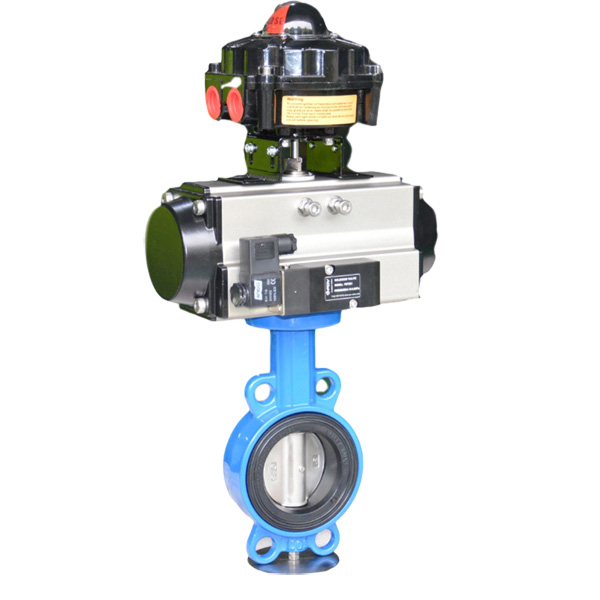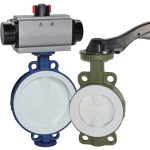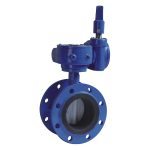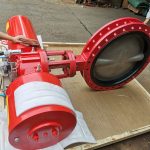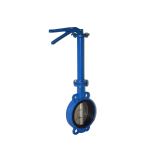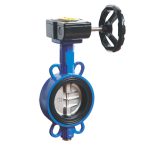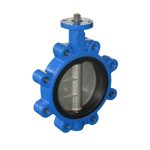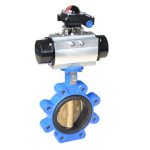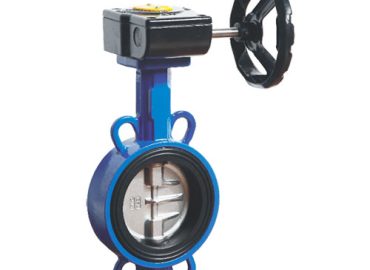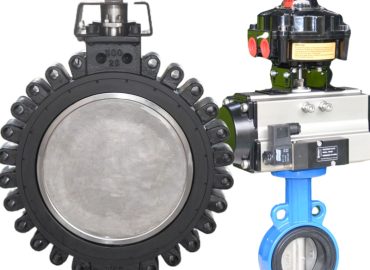In the world of fluid control systems, valves play a crucial role, with two major types being butterfly valves and gate valves. Both are designed to regulate and control the flow of liquids or gases through a system, yet they each offer unique characteristics that make them suitable for different applications. While they may seem similar at first glance, understanding the distinct differences between butterfly valves and gate valves can help engineers and technicians choose the right equipment for their specific needs. This article aims to delve into the key differences between these two types of valves, discussing their structure, operation, advantages, disadvantages, and best use cases.
Introduction
Butterfly valves and gate valves are two distinct types of valves, each with their unique characteristics and applications. A butterfly valve is a quarter-turn rotational motion valve that is used to stop, regulate, and start the flow of fluid. It has a disc mounted on a rotating shaft which, when the valve is fully open, aligns itself with the direction of the flow, offering minimal obstruction. When the valve is closed, the disc rotates to block the path of the flow. Butterfly valves are known for their compact design, lightweight nature, cost-effectiveness, and quick operation. However, they may struggle with controlling flow at low volumes and may not be suitable for high-pressure, high-temperature applications due to potential disc wear over time.
On the contrary, a gate valve, also known as a sluice valve, operates by lifting a round or rectangular gate or wedge out of the path of the fluid. The sealing surfaces between the gate and seats are flat, so gate valves are often used when a straight-line flow of fluid and minimum restriction is desired. They are excellent for on/off control with a low pressure drop and can handle a wide range of temperatures and pressures, including slurries and viscous fluids. However, gate valves are generally slower to open and close, can be susceptible to corrosion and galling, and are not suitable for throttling applications.
In essence, the choice between a butterfly valve and a gate valve largely depends on the specific requirements of the system in which they will be implemented, such as the application, cost, size, pressure, and temperature considerations.
Brief introduction to the importance of valves in controlling fluid flow.
Valves play a critical role in controlling fluid flow in various industrial and domestic applications. They are essentially mechanical devices that regulate the flow rate, pressure, or direction of liquids, gases, fluidized solids, or slurries through a pipeline. By opening, closing, or partially obstructing pathways, valves allow for precise control over fluid flow, ensuring safety, efficiency, and proper functionality of systems. From simple plumbing systems in homes to complex pipelines in chemical plants, power generation facilities, and oil refineries, valves are integral components that contribute significantly to operational success and safety. Understanding the importance of valves is essential for effective fluid management and system design.
Basic definition and functionality of both Butterfly and Gate Valves.
Butterfly valves and gate valves are integral components in fluid control systems, each serving a unique purpose. A butterfly valve is a type of quarter-turn valve that controls the flow of fluid through a disc-type element, which rotates on an axis. The disc, positioned in the center of the pipe, has a rod passing through it connected to an actuator on the outside of the valve. When the actuator turns, the disc either allows flow (in the parallel position) or blocks it off (in the perpendicular position). On the other hand, a gate valve, also known as a sluice valve, operates by lifting a rectangular or round gate out of the path of the fluid. The gate is usually wedge-shaped and is lifted by turning a knob or wheel at the top of the stem. This allows for precise control over fluid flow but requires more space and time to operate compared to a butterfly valve.
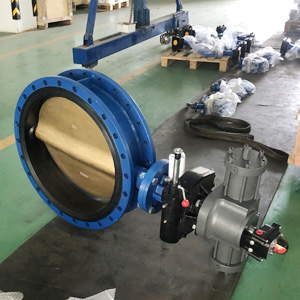
Overview of Butterfly Valves
Butterfly valves, named for the wing-like action of the disc, are one of the most widely used types of valves in various industries due to their reliability and simplicity. These valves function by rotating a disc mounted on a shaft within the valve, which modulates flow through the pipeline. When the disc aligns with the flow of fluid, the valve is fully open. Conversely, when the disc is turned such that it is perpendicular to the flow, the valve is closed. This straightforward operation makes butterfly valves highly efficient and easy to use.
One of the main advantages of butterfly valves is their compact and lightweight design. Unlike other types of valves, butterfly valves require minimal space, making them ideal for applications where space is at a premium. They’re also known for their excellent flow control capabilities and quick operation. With just a quarter turn, the valve can go from fully open to fully closed, allowing for fast isolation or restoration of flow.
Another notable feature of butterfly valves is their cost-effectiveness. They have fewer moving parts, which not only reduces maintenance needs but also makes them less expensive than many other types of valves. Furthermore, they are versatile and can be used in a wide range of applications, including water supply, wastewater treatment, fire protection, and power generation, among others.
However, butterfly valves are not without limitations. For instance, they may not be suitable for high-pressure applications due to the potential for disc deformation under pressure. Also, the disc obstructs the flow path even when fully open, leading to a pressure drop across the valve.
In conclusion, butterfly valves are an essential component in many fluid management systems. Their compact size, ease of operation, cost-effectiveness, and versatility make them a popular choice for many applications. However, careful consideration must be given to the specific application requirements to determine if a butterfly valve is the most suitable option.
Description of the design and structure of Butterfly Valves.
Butterfly valves are ingeniously designed for quick and efficient flow control in various fluid systems. They consist of a circular disc or plate, which is the primary controlling element, mounted on a rotating shaft. The disc is positioned in the middle of the pipe, and a rod passes through it to an actuator located on the outside of the valve. When the actuator is turned, it causes the disc to rotate about the stem, either parallel or perpendicular to the flow. In the open position, the disc is rotated such that it allows fluid to pass through, aligning itself with the direction of the flow. When the valve is closed, the disc rotates to a position where it blocks the passage of fluid. Butterfly valves are known for their compact and lightweight design, which makes them easy to install and requires less support than other types of valves. The simplicity of their design also allows for efficient operation and lower costs. However, the disc obstructs the flow even when fully open, which may cause a slight pressure drop.
Explanation of how Butterfly Valves work.
Butterfly valves are a type of quarter-turn valve that control the flow of fluid within a system. The primary component of this valve is a metal disc, often referred to as the “butterfly”, which is mounted on a rod. The operation of the valve is relatively simple: when the valve is open, the disc rotates to align with the fluid flow, allowing it to pass through. Conversely, when the valve is closed, the disc is rotated by 90 degrees such that it obstructs the passageway, preventing fluid flow. This rotation is usually performed by a handle or hand wheel connected to the rod. The simplicity and effectiveness of this design make butterfly valves an excellent choice for systems requiring reliable stop/start functionality.

Common applications of Butterfly Valves.
Butterfly valves are extensively used across a wide spectrum of industries due to their simple design, cost-effectiveness, and efficient operation. In the water supply and wastewater treatment industries, they are commonly employed for their ability to handle large flow volumes, enabling swift isolation or restoration of flow when necessary. Additionally, in the oil and gas industry, butterfly valves are used in fuel handling systems where tight shut-off is required. They are also prevalent in the chemical industry due to their ability to withstand a variety of chemicals and high temperatures. In HVAC systems, butterfly valves are used to control the flow of hot and cold water. Furthermore, the food and beverage industry employs sanitary butterfly valves, which are designed to be cleaned without disassembly, thus ensuring a hygienic process. Lastly, in fire protection systems, butterfly valves are used as control valves to regulate the flow of water in sprinkler systems. However, it’s important to note that the suitability of butterfly valves depends on various factors including pressure, temperature, and the type of fluid being handled.
Advantages of Butterfly Valves
Butterfly valves bring a plethora of advantages to fluid control systems, making them a popular choice in various applications. One of the main advantages is their simple and compact design, which not only makes them lightweight but also requires less space compared to other valve types like gate or globe valves. This compactness and lightness make installation easier and cheaper, as they need less support structure. Butterfly valves are also appreciated for their quick operation, as they require only a quarter turn to open or close, enabling rapid isolation of flow which is crucial in emergency situations. They offer reliable sealing capabilities to prevent leaks when closed, with some types offering near zero leakage. The versatility of butterfly valves is another strength; they can handle different types of media including water, oil, gases, and even corrosive fluids depending on the materials used. Furthermore, they are available in a wide range of sizes, from small to very large diameters, which broadens their applicability. Maintenance is also relatively straightforward due to the minimal number of moving parts. In terms of cost, butterfly valves are typically more affordable than other valve types, both in initial investment and long-term maintenance costs. Despite causing a slight pressure drop in the system when fully open due to the disc obstruction, the myriad benefits they offer make butterfly valves an advantageous choice for many fluid control systems.
Compactness and lightweight nature.
The compactness and lightweight nature of butterfly valves offer significant advantages in various applications. The compact design of a butterfly valve means it requires less space than other types of valves, making it an ideal choice for systems where space is at a premium. This space efficiency doesn’t compromise the valve’s functionality, as it still offers reliable control of fluid flow. Furthermore, the lightweight nature of butterfly valves simplifies installation and reduces the need for heavy-duty support structures, resulting in lower installation costs. It also makes maintenance tasks easier to perform, as the valves can be handled and moved around with less effort. In addition, the lightweight design can lead to significant savings in transportation costs when the valves need to be shipped or moved between different locations. Overall, the compactness and lightweight nature of butterfly valves contribute to their versatility, ease of use, and cost-effectiveness, making them a popular choice in many fluid control systems.
Cost-effectiveness.
One of the key advantages of butterfly valves is their cost-effectiveness, which makes them an appealing option for many industrial applications. First and foremost, butterfly valves are typically less expensive to purchase than other types of valves such as gate, globe, or ball valves. This lower initial investment can significantly reduce project costs, especially in large-scale operations where numerous valves are required. Additionally, due to their simple design, butterfly valves are easier and cheaper to install and maintain. Their lightweight nature means less support structure is needed during installation, reducing labor and material costs. When it comes to maintenance, the fewer moving parts in a butterfly valve result in less wear and tear, thus extending the valve’s lifespan and lowering replacement costs. Furthermore, the easy operability of butterfly valves can lead to increased efficiency and reduced downtime, contributing to overall cost savings in the long run. Therefore, while they may not be suitable for all circumstances, the cost-effectiveness of butterfly valves makes them an economical choice for many fluid control systems.
Quick operation due to 90-degree rotation.
Butterfly valves offer several advantages, one of the most notable being their quick operation due to a 90-degree rotation mechanism. This swift opening and closing functionality not only allows for easy and efficient control of fluid flow but also significantly reduces the time required for system operations. The quick operation can be particularly beneficial in emergency situations where an immediate shut-off is necessary to prevent potential damage or spillage. In addition, the 90-degree rotation operation contributes to the durability of the valve as it minimizes wear and tear on the valve components, leading to lower maintenance costs over time. Lastly, this feature enables butterfly valves to handle high-pressure flow scenarios effectively, making them versatile across various applications, from domestic water supply systems to industrial chemical processing plants.

Lower pressure drop.
One of the key advantages of butterfly valves is their lower pressure drop. In fluid dynamics, pressure drop is a decrease in pressure from one point in a pipe or tube to another point downstream. It’s an important factor to consider in the design and operation of fluid systems. Butterfly valves, with their design featuring a thin disc rotating in the center of the pipe, create a minimal obstruction to the flow when fully opened, resulting in a lower pressure drop compared to other types of valves. This means that less energy is required to pump fluid through a system that uses butterfly valves, leading to increased energy efficiency and cost savings. Furthermore, the lower pressure drop allows for faster flow rates, making butterfly valves an excellent choice for systems requiring high-speed fluid handling. This benefit, combined with their simplicity, durability, and ease of maintenance, makes butterfly valves a versatile solution for a wide range of applications.
Limitations of Butterfly Valves
While butterfly valves offer numerous advantages in terms of cost-effectiveness, compactness, and lightweight design, they also come with certain limitations that must be considered when choosing the right valve for a specific application. One of the main limitations of butterfly valves is their inability to provide precise flow control, especially at low flow rates. Unlike globe or needle valves, which can be finely adjusted to achieve precise control over fluid flow, butterfly valves tend to have a non-linear flow characteristic. This means they may not fully open or close at low flow rates, making them less suitable for applications requiring tight control over fluid flow. Additionally, butterfly valves may not be the best choice for handling abrasive or corrosive media. The disc and seat of the valve are directly exposed to the flowing medium, which can lead to rapid wear and tear if the medium is abrasive or corrosive. This can result in the need for frequent maintenance or replacement, increasing operational costs. Furthermore, while the simple design of butterfly valves contributes to their cost-effectiveness, it also means they lack the robustness of more complex valves. They may not perform as well under high pressure or temperature conditions, limiting their use in certain industrial applications. Lastly, butterfly valves can cause a slight pressure drop in the system due to the disc obstructing the flow path, which might affect the overall efficiency of the system. Therefore, while butterfly valves are an excellent choice for many applications, their limitations must be taken into account to ensure they are the most appropriate solution for the specific needs of a given system.
Difficulty controlling flow at low volumes.
One of the primary limitations of pneumatic butterfly valves is the difficulty in controlling flow at low volumes. Due to their design, butterfly valves are typically more effective in systems that require moderate to high flow rates. The disc within the valve, which rotates to either block or allow flow, does not provide a linear relationship between the position of the disc and the volume of flow. This means that when the valve is slightly open, the flow rate can increase rapidly, making it challenging to control small volumes of fluid accurately. For applications requiring precise control over low flow rates, this characteristic of butterfly valves can lead to inefficiencies and potential issues with system performance. Therefore, while butterfly valves are excellent for their simplicity and cost-effectiveness in many situations, they may not be the optimal choice for systems requiring precision control at low flow volumes.
Possibility of disc wear over time.
Butterfly valves are a critical component in many industrial applications due to their ability to regulate fluid flow efficiently. However, one significant limitation of butterfly valves is the potential for disc wear over time. The disc, which is the primary component that controls the flow of fluid, is constantly exposed to the medium flowing through the valve. This continuous exposure, especially in applications involving abrasive or corrosive substances, can cause the disc to wear down over time. This wear and tear can lead to decreased performance, leakages, and eventually, valve failure. Moreover, the worn-out disc may not seal properly against the valve seat, further compromising the valve’s ability to control flow effectively. Therefore, regular inspection and maintenance are crucial to ensure the longevity and performance of butterfly valves.
Not suitable for high-pressure, high-temperature applications.
Butterfly valves, while versatile and efficient in many settings, have certain limitations that make them unsuitable for high-pressure and high-temperature applications. The design of a butterfly valve, which includes a disc mounted on a rotating shaft, is not inherently capable of withstanding extreme pressure or temperature conditions. High pressure can cause the disc to deform, leading to leaks or complete valve failure. Similarly, high temperatures can degrade the materials, particularly the seat and seals, causing them to lose their integrity and effectiveness. Furthermore, the flow characteristics of butterfly valves are not ideal for applications that require precise flow control under high pressure or temperature conditions. Therefore, in industries where the process conditions involve high pressures and temperatures, such as power plants or oil and gas industry, other types of valves like gate or globe valves are often preferred over butterfly valves.
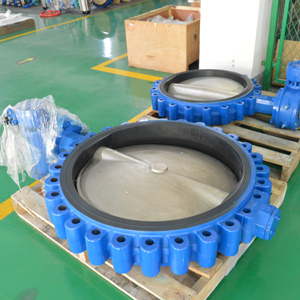
Overview of Gate Valves
Gate valves, also known as sluice valves, are a type of valve that is commonly used in various industrial applications to control the flow of fluids. They are named for their resemblance to a gate or a door, with an internal ‘gate’ mechanism that can be raised or lowered to either allow or prevent flow. The primary function of a gate valve is to permit or stop fluid flow, but they are not typically used for regulating or throttling flow because the high velocity of fluid against a partially open gate can cause significant wear on the valve.
Gate valves are characterized by their robust and simple design, making them durable and reliable for long-term use. They are available in a wide range of sizes and materials, including brass, bronze, cast iron, ductile iron, stainless steel, and many others, which allows for their application in various environments and with different types of fluids. Gate valves can be operated manually using a handwheel or automatically with the help of actuation technology.
One of the key advantages of gate valves is that they provide a straight-line flow of fluid with minimal resistance, resulting in little pressure drop across the valve when fully open. This makes them highly efficient for systems requiring unobstructed flow. However, gate valves do have some limitations. They are typically slower to operate than other types of valves due to the multiple turns required to fully open or close the valve, and they may not be suitable for applications that require frequent operation or immediate shut-off.
Despite these limitations, gate valves continue to be widely used across various industries, including oil and gas, water and wastewater treatment, power generation, and more. Their ability to handle high pressures and temperatures, combined with their durability and reliability, make them a valuable asset in many fluid handling systems.
Description of the design and structure of Gate Valves.
Gate valves are a type of control valve that are designed for fully open or fully closed service. They are primarily used as isolating valves in pipelines and are not typically used for controlling flow. The key components of a gate valve include a gate-like disc, a screwed stem, and a hand-wheel. The disc, which can be rectangular or circular, slides across an opening to stop the flow of fluid when the valve is closed. To open the valve and allow unobstructed fluid flow, the hand-wheel is turned, which actuates the screwed stem and lifts the gate from the opening. Gate valves are constructed from castings, forgings, or weld-fabricated assemblies, with casting designs being the most common. A significant advantage of gate valves is that they provide a full port, meaning the diameter of the valve opening is equal to the diameter of the pipe, minimizing flow resistance.
Explanation of how Gate Valves work.
Gate valves, also known as sluice valves, are a type of control valve that either allows media to flow through unobstructed or stops the fluid flow. They consist of three main components: the body, bonnet, and trim. The body is usually connected to the piping system through flanged, screwed, or welded joints. The operation of the valve is done by means of a threaded stem, which requires multiple rotations to open or close the valve completely. This mechanism involves lifting a barrier or ‘gate’ out of the path of the fluid to open the valve, and lowering it to close. The gate or wedge-type disk moves perpendicular to the flow to start or stop the fluid flow. While gate valves are excellent for blocking or permitting fluid flow, they are not designed for regulating flow, for which other valve designs are more suitable.
Common applications of Gate Valves.
Gate valves, also known as sluice valves, are widely used in a variety of applications due to their ability to provide straight-line fluid flow with minimum restriction. Their most common application is found in water supply systems, where they serve as linear-motion isolation valves, either stopping or allowing flow as needed. This makes them particularly useful in irrigation systems that require high flow rates. They also find extensive use in both above-ground and underground installations due to their robust design and reliability.
In the industrial sector, gate valves are a common sight. They are frequently used in power generation, petrochemicals, oil and gas, and wastewater treatment applications. In these industries, the ability of gate valves to handle different types of fluids under high pressure and temperature conditions is highly valued. However, it’s important to note that while gate valves are excellent for starting or stopping flow, they are not typically used for regulating or throttling flow as this can lead to significant wear on the valve.
In conclusion, gate valves’ versatility, efficiency, and durability make them suitable for a wide range of applications, from domestic water supply systems to complex industrial processes.
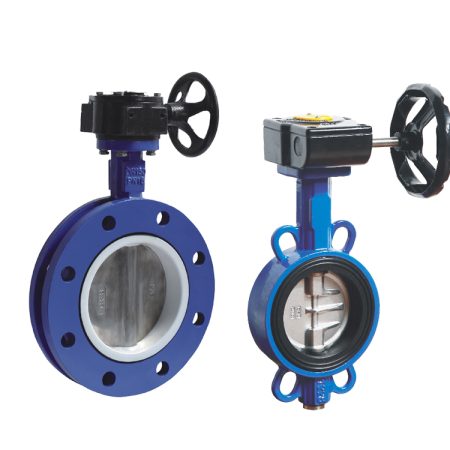
Advantages of Gate Valves
Gate valves, also known as sluice valves, offer several advantages that make them a preferred choice for many industries. One of the most prominent benefits is their ability to provide unobstructed, straight-line flow of fluid. When fully open, a gate valve has no obstruction in the flow path, which results in very low-pressure loss. This makes these valves particularly beneficial in applications where efficient flow is crucial.
Additionally, gate valves are multi-directional, meaning they can be installed in either direction on a pipeline. This offers flexibility during installation and ensures proper flow regardless of orientation. Gate valves are also known for providing a tight seal when closed. The design of the gate valve, with the gate and seats in direct contact, allows for a high-quality seal that effectively prevents any leakage.
Furthermore, gate valves are versatile and can handle a wide range of temperatures and pressures, making them suitable for various applications across different industries. They can be used with a variety of media, including air, oil, gas, water, and steam. They’re available in a variety of sizes and materials, allowing them to be customized to specific needs.
In terms of longevity, gate valves are typically robust and durable, capable of withstanding long-term use without significant wear or degradation. Their simplicity in design also makes them relatively easy to maintain and repair, reducing the overall cost of ownership.
Despite being slower to operate compared to other types of valves due to the multiple turns required to fully open or close the valve, their efficiency, reliability, and versatility make gate valves an excellent choice for many fluid control systems.
Excellent for on/off control with low pressure drop.
Gate valves are widely recognized for their excellent on/off control capabilities. One of the key advantages of gate valves is their ability to provide a straight-through, unobstructed flow path when fully open, resulting in a very low-pressure drop across the valve. This makes them an ideal choice for applications that require minimal interference with the flow of fluid or gas. Additionally, the full-bore design of gate valves ensures that there is no change in the diameter of the pipe when the valve is open, further reducing pressure loss and allowing for maximum flow rate. This feature also helps in reducing turbulence within the system, which can lead to wear and tear over time. Furthermore, gate valves are excellent at handling slurries or viscous fluids, as their design prevents any pockets from forming where particles could accumulate. Overall, these features make gate valves a highly efficient and reliable choice for on/off control in a wide range of industrial applications.
Suitable for a wide range of temperatures and pressures.
Gate valves, due to their design and structure, have a wide range of applications and advantages. They are suitable for use in a variety of temperature and pressure conditions, making them highly versatile. Whether it’s normal, high, or low temperatures or pressures, gate valves can effectively manage fluid flow. This capacity to handle diverse conditions extends from industrial settings to power plants. Furthermore, these valves are known for their durability, withstanding high-pressure and high-temperature conditions which ensures long-lasting performance. One of the significant benefits of gate valves is their low fluid resistance, leading to energy efficiency. Their simple body design allows dual flow direction, minimizing erosion, and pressure loss. Because there is no obstruction in the flow path when fully open, gate valves result in very low-pressure loss, increasing their efficiency. Lastly, the hard-sealed gate valve is particularly suited for high-temperature applications.
Ability to handle slurries and viscous fluids.
Gate valves are particularly notable for their ability to handle slurries and viscous fluids, thanks to their design which provides a straight, unobstructed path for the fluid to flow. This feature minimizes pressure loss and reduces the chances of clogging, making gate valves highly effective in applications involving thicker liquids or semi-solids. The ‘gate’ or ‘wedge’ of the valve can completely separate the flow medium when closed, preventing any backflow, and when open, it retracts fully into the valve, allowing the slurry or viscous fluid to pass through without interruption. Further, the robust construction of many gate valves allows them to withstand abrasive wear from the passage of such fluids, extending their service life. However, it’s important to note that the valve should be either fully open or fully closed when handling these types of fluids, as partial opening may lead to erosion of the gate.
Limitations of Gate Valves
Despite their numerous advantages, gate valves also have some limitations that can affect their performance in certain applications. One of the main drawbacks of gate valves is their slow operation. Opening or closing a gate valve involves multiple turns of the stem, which can take considerable time and effort, particularly in larger sizes. This makes them less suitable for applications where quick shut-off is required.
Another limitation is their unsuitability for throttling purposes. Although gate valves can be partially opened, they are not designed for flow control or regulation. Partial opening can cause vibration and chattering, leading to wear and tear on the gate and seats, reducing the lifespan of the valve.
Furthermore, gate valves can be more susceptible to seat and disk wear due to the sliding motion between the disk and seat during opening and closing. This can affect the valve’s ability to provide a tight seal over time. Regular maintenance and inspection are necessary to ensure the valve continues to function optimally.
In addition, the complexity of their design makes gate valves more expensive to produce and maintain compared to other types of valves. They also tend to be heavier, especially in larger sizes, which can increase installation costs and require more robust support structures.
Lastly, while gate valves can handle a wide range of temperatures and pressures, they may not be suitable for extreme conditions or for use with certain corrosive or abrasive media. The choice of material and design should be carefully considered based on the specific application to ensure long-term performance and durability.
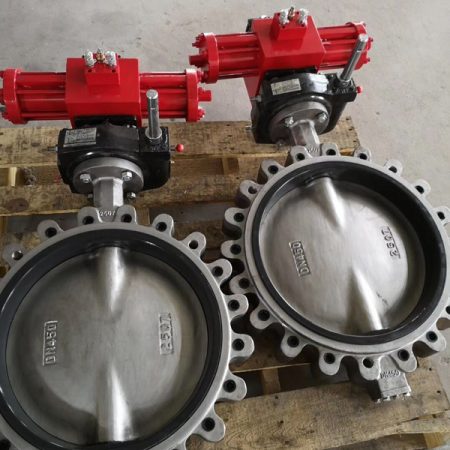
In conclusion, while gate valves offer many benefits, these limitations need to be considered when selecting the most appropriate valve for a particular application.
Slow to open and close.
While gate valves offer many advantages, they do also have some limitations, one of the most notable being their slow operation. Gate valves operate by lifting a gate or wedge out of the path of the fluid flow, which requires multiple turns of the valve stem. This means that fully opening or closing a gate valve can be a time-consuming process compared to other types of valves, such as ball or butterfly valves. This slow operation can be a disadvantage in scenarios where rapid shut-off is required for safety purposes or in applications that require frequent cycling. Furthermore, due to this slower operation, gate valves are not typically recommended for throttling applications, as the high velocity that can occur when the valve is partially open may cause vibration, noise, and damage to the valve itself. Despite these limitations, however, gate valves remain a popular choice for many applications due to their excellent sealing capabilities, straight-line flow, and low-pressure drop.
Susceptible to corrosion and galling.
Although gate valves have numerous advantages, they do come with certain limitations. One such limitation is their susceptibility to corrosion and galling. The metallic construction of these valves, particularly those made from certain types of steel, can make them prone to rust and corrosion over time, especially when exposed to harsh environmental conditions or corrosive media, as outlined in a blog post on The Piping Mart. This corrosion can lead to accelerated wear and tear, potentially causing premature failure of the valve. Galling, a form of wear caused by adhesion between sliding surfaces, is another issue that can affect gate valves. According to a report on Thermal Spray, galling in gate valves can result in unexpected oil and gas leakages, leading to unanticipated shutdowns. These issues underscore the importance of choosing valves made from appropriate materials for the specific application and environment, and also highlights the need for regular maintenance and checks to prevent catastrophic failures .
Not suitable for throttling applications.
While gate valves offer many advantages, they do have limitations and are generally not suitable for throttling applications. Throttling is the process of regulating the amount of fluid flowing through a system by partially opening or closing a valve. However, gate valves are designed to be fully open or fully closed. When partially opened, the high velocity flow can cause vibrations and wear on the gate and seats, leading to potential damage and premature failure of the valve. Moreover, the unbalanced forces from the fluid pressure can make it difficult to control the position of the gate accurately. These issues can result in an unstable flow, increased noise, and even cavitation. Therefore, while gate valves excel at full shut-off or full-flow applications, they are not the best choice when precise flow control or regulation is required.
Choosing between Butterfly Valves and Gate Valves
Choosing difference between butterfly valve and gate valve primarily depends on the specific needs of your application, as each type of valve has its own set of strengths and weaknesses.
Butterfly valves are often chosen for their compact size, lightweight nature, and cost-effectiveness. These characteristics make them ideal for space-limited installations or where weight is a concern. Butterfly valves also offer quick operation, requiring only a 90-degree turn to open or close fully, which can be an important factor in emergency shutdown situations or where rapid flow control is necessary. They are also well-suited for throttling applications, as they allow for precise control of the flow rate when partially opened. However, butterfly valves may not be the best choice for handling thick, viscous fluids or slurries, as their disc obstructs the flow path when the valve is closed, which can lead to clogging or erosion.
On the other hand, gate valves are highly versatile and can handle a wide range of temperatures and pressures. They are particularly effective for handling slurries and viscous fluids, thanks to their straight-through design which minimizes pressure loss and prevents clogging. Gate valves also provide a tight seal when fully closed, making them suitable for applications where zero leakage is required. However, gate valves are generally larger, heavier, and more expensive than butterfly valves. They also operate slower, requiring multiple turns of the stem to open or close, which can be a disadvantage in situations where quick operation is needed.
In conclusion, the choice difference between butterfly valve and gate valve should be based on factors such as the nature of the fluid being handled, the operating conditions, the need for flow control or shut-off, the available space and weight limitations, and the overall cost considerations. Careful evaluation of these factors will help you select the most appropriate valve for your application.
Factors to consider when choosing a valve type (e.g., application, cost, size, pressure, temperature).
Choosing the right valve type for a specific application is crucial to ensure optimal performance and longevity. Several factors should be taken into consideration during this process. First and foremost, understanding the application is key. This includes knowing the type of fluid (gas, liquid, slurry), its viscosity, and whether it contains any abrasive or corrosive substances. The function of the valve (shut-off, regulation, non-return) should also align with the needs of the application. Second, cost is an important factor. This not only includes the initial purchase price but also installation costs, maintenance requirements, and the potential cost implications of a valve failure. Size is another crucial aspect, as the valve must fit within the available space and be compatible with the size of the pipe system. Pressure and temperature are also vital considerations; a valve must be able to withstand the maximum pressure and temperature of the system without compromising its performance or safety. Other factors that might influence the choice of valve include the required speed of operation, the need for manual or automatic control, and specific industry standards or regulations. By carefully weighing all these factors, you can select the most suitable valve type for your specific needs.
Guidance on when to use each type of valve.
The choice difference between butterfly valve and gate valve depends largely on the specific needs of your application. Butterfly valves, named for the rotating disc that opens and closes the valve, are designed to start, stop, and regulate the flow of water. They are generally lighter, more cost-effective, and easier to install, especially in pipes with larger widths, as pointed out by Xintai Valves and Dombor. Their compact size makes them versatile for a variety of uses. They are also divided into two groups based on the relation between flow rate and valve opening: linear and equal percentage. This makes butterfly valves suitable for applications where flow control is crucial. On the other hand, gate valves use a gate or wedge to allow or prevent fluid flow. They are ideal for applications that require an unobstructed, straight-line flow or full shut-off. However, they may not be as cost-effective or easy to install as butterfly valves, especially for larger pipe diameters. Therefore, the choice between these two types of valves will depend on factors such as the nature of the fluid, operational requirements, installation constraints, and budget.
Conclusion
In summary, the decision between wafer butterfly valve and gate valve is a matter of matching the right tool to the job. Both types of valves serve distinct functions and are better suited to different applications.
Butterfly valve, with their compact size and lightweight design, are ideal for situations where space and weight are a concern. Their ability to offer quick operation and precise control over flow rate makes them a preferred choice for throttling applications. However, their design, which leaves a disc in the middle of the flow path when closed, can cause issues with thicker or more viscous fluids.
Gate valves, on the other hand, are the workhorses of the valve world, capable of handling a wide range of pressures and temperatures. Their straight-through design minimizes pressure loss and prevents clogging, making them a strong choice for applications involving slurries or viscous fluids. Additionally, their tight seal when fully closed makes them suitable for applications where zero leakage is crucial. However, they are generally larger, heavier, and more expensive than butterfly valves and operate slower.
Therefore, when choosing between these two types of valves, it is essential to consider the specific requirements of your application, including the nature of the fluid, operating conditions, space and weight limitations, need for flow control or shut-off, and cost considerations. By understanding the strengths and weaknesses of each valve type, you can make an informed decision that best suits your needs.
So, whether you choose a butterfly valve for its compactness and speed, or a gate valve for its versatility and robustness, remember that each has its place in the industrial landscape. Choosing the right valve can ensure efficient and safe operation of your systems, ultimately saving you time, money, and potential headaches down the road.
Recap of the main differences between Butterfly Valve and Gate Valve.
Butterfly valves and gate valves are two distinct types of valves, each with their own unique features and applications. Butterfly valves are known for their compact size and lightweight design, which makes them a preferred choice for space-limited installations or where weight is a concern. They offer quick operation, needing only a 90-degree turn to open or close, and are suitable for throttling applications due to their ability to control flow rate effectively. However, they can struggle with thick fluids or slurries due to potential clogging or erosion.
Gate valves, on the other hand, are versatile and can handle a wide range of temperatures and pressures. Their straight-through design minimizes pressure loss and prevents clogging, making them effective for handling viscous fluids or slurries. They provide a tight seal when fully closed, suited for applications requiring zero leakage. However, they are generally larger, heavier, and more expensive than butterfly valves and operate slower, requiring multiple turns to open or close.
In essence, the main differences between butterfly and gate valves lie in their design, operation speed, suitability for throttling, and ability to handle different fluid types and operating conditions. The choice between the two should be based on the specific requirements of your application.
Final thoughts on the importance of choosing the right valve for the specific application.
In conclusion, the importance of choosing the right valve for a specific application cannot be overstated. The correct valve choice can significantly enhance system efficiency, ensure optimal performance, reduce maintenance costs, and prolong the lifespan of the entire system. Conversely, incorrect valve selection can lead to operational inefficiencies, increased wear and tear, frequent maintenance, and in worst-case scenarios, system failure. Therefore, careful consideration must be given to several factors such as the nature of the fluid, operating pressure and temperature, required flow control precision, and cost-effectiveness. Understanding the strengths and weaknesses of different valve types like gate, ball, butterfly, globe, and check valves, and how they align with your specific needs, is crucial. Always remember that the most expensive valve is not necessarily the best one for your application, and the cheapest might end up costing more in the long run due to maintenance and potential system downtime. It’s always advisable to consult with a valve expert or engineer when making this critical decision.


